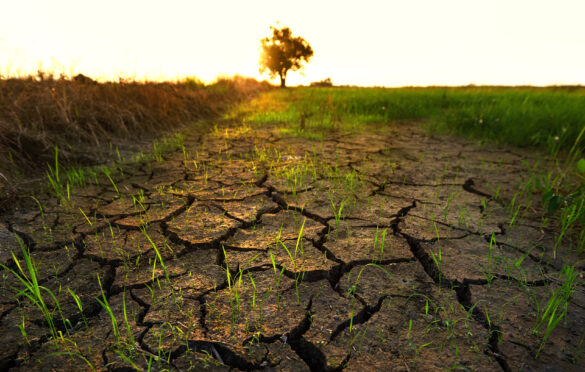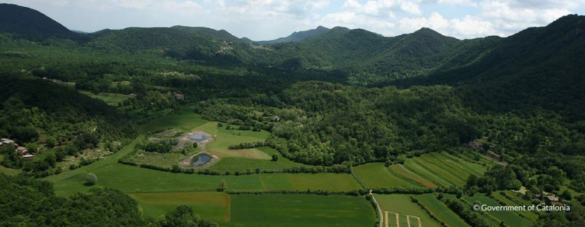A Global Indicator of Climate Change Adaptation in Catalonia
Catalonia is a historic nation and one of Spain’s most affluent and industrialised areas, with its own language and cultural identity. Catalonia has experienced temperature increases in recent decades (1.6ºC from 1950 to 2018), especially in the summer months. Sea temperatures and sea levels are also on the rise. In fact, at one point in the region, sea level has been rising at 4 cm per decade since 1990. Catalonia has a target to reduce emissions by 40% on 1990 levels by 2030. In 2014, the regional Government met its 25% reduction target on 2005 levels for 2020 6 years early. In 2017, Catalonia introduced a Climate Change Law that also set longer-range reduction goals of 65% by 2040 and 100% by 2050. The law, which will be enforced from 2019 taxes heavy polluters. On 15th May 2019, the Government of Catalonia declared a climate emergency.
In 2012, when the Catalan Strategy for adapting to climate change 2013-2020 (ESCACC) was launched, Catalonia took bold steps towards addressing the region’s exposure to the impacts of climate change. The strategy combines measures in sectoral planning, risk management and best practice to improve climate change adaptation and resilience. Its main objectives were to increase the adaptive capacity of the most vulnerable areas, socio-economic sectors and entire natural systems of Catalonia. Generating and transferring knowledge of climate change adaptation was also a priority.
Novel process
ESCACC identified 182 adaptation measures, 30 of which were generic and 152 specific to sectors and systems. Analysis on whether ESCACC is making progress on adaptation to climate change requires indicators that can look at three key areas, the measures themselves, the impact it would have on the sector or system it was targeted at, and the impact it would have for Catalonia. The Global Indicator of Climate Change Adaptation in Catalonia has been developed to do just that – to understand how and if the region is adapting to climate change. Importantly, the process was not concerned with monitoring the impacts themselves, but with the effectiveness of the adaptive actions.
Evaluating adaptation measures is complicated and a process of detailed analysis was undertaken in Catalonia to find the best approach. 50 indicators were initially identified, however, once started, it became clear that not all were useable. Indicators could only be included if there was 10 consecutive years of data on them and only if it was possible to directly measure an outcome. Indicators that had solely qualitative data were also discarded. When considering indicators based on these criteria, it became apparent that the key question: ‘is Catalonia adapting well to the impacts of climate change?’ was impossible to answer. Following this process 29 indicators were selected based on 2 factors, use of resources and environmental quality. Significantly, some important areas had to be discarded, including all biodiversity and the majority of agriculture and livestock and fishing indicators. These are all fundamental in the long term and their omission highlighted gaps in knowledge and understanding, as well as the need to begin to collect robust data on these areas in order for them to be included in the future.
The ESCACC set the strategic framework for managing adaptation in the region and was subsequently supported by EU funding for the project: Demonstration and validation of innovative methodology for regional climate change adaptation in the Mediterranean area (LIFE MEDACC), which ran for 5 years between July 2013 and June 2018. Using the demonstration project that was developed through MEDACC, Catalonia has been able to test some of the measures in the ESCACC and learn more about their effects as adaptation measures and assess the environmental and economic costs related to the (non-)application adaptation measures. MEDACC’s total budget was 2,548,841.00 €, of which the EU contributed 1,266,208.00 €. The Office for Climate Change was the project lead, and there were 4 partner institutions located in the region that also participated in MEDACC.
And the results of the MEDACC project can contribute to closing these gaps for others to follow. MEDACC was designed to prove ESCACC as a strategy through the use of pilot projects. Focus was placed on validating the methodology used to identify the indicators, completing assessments of future impacts using scenarios, developing action plans and establishing demonstration sites.
In undertaking this process, Catalonia has broken new ground in understanding what is required to be resilient to the impacts of climate change. It has been a challenging process, the fact that little similar work has been done like this elsewhere meant there was a lack of evidence to use in compiling the indicators.
In the Climate Emergency Declaration of May 2019, the Government highlighted the following amongst other priorities:
- Prioritise in public policies the options with less climate impact and greater contribution to the adaptation to the conditions derived from climate change.
- Adopt the necessary measures to stop the worrying loss of biodiversity and promote the recovery of ecosystems.
- Adopt measures aimed at reducing the vulnerability of those social sectors that are more sensitive to the impacts of climate change and those to which this transition may affect to a greater extent.










